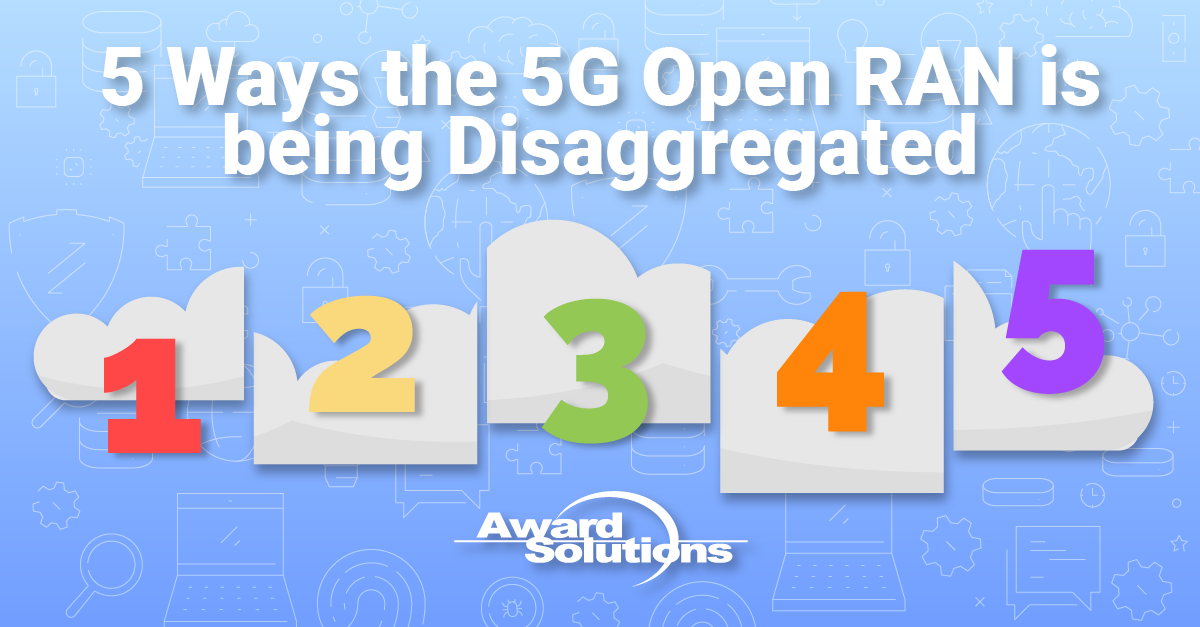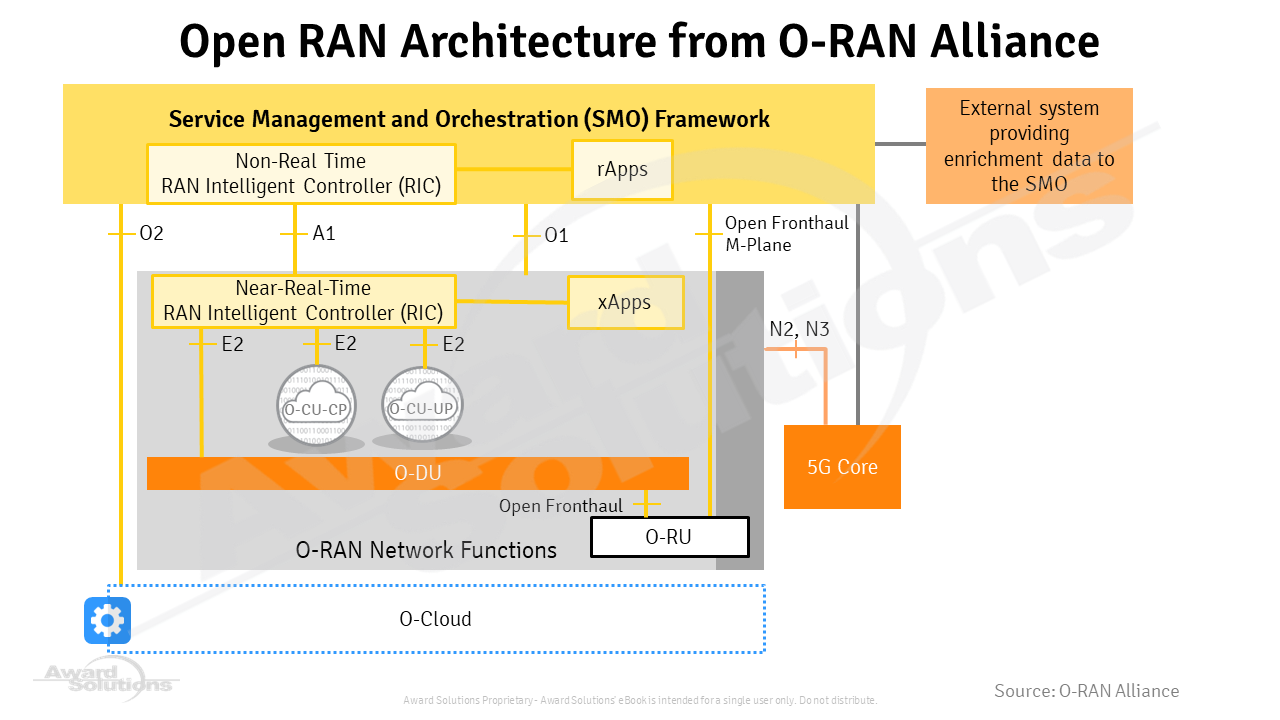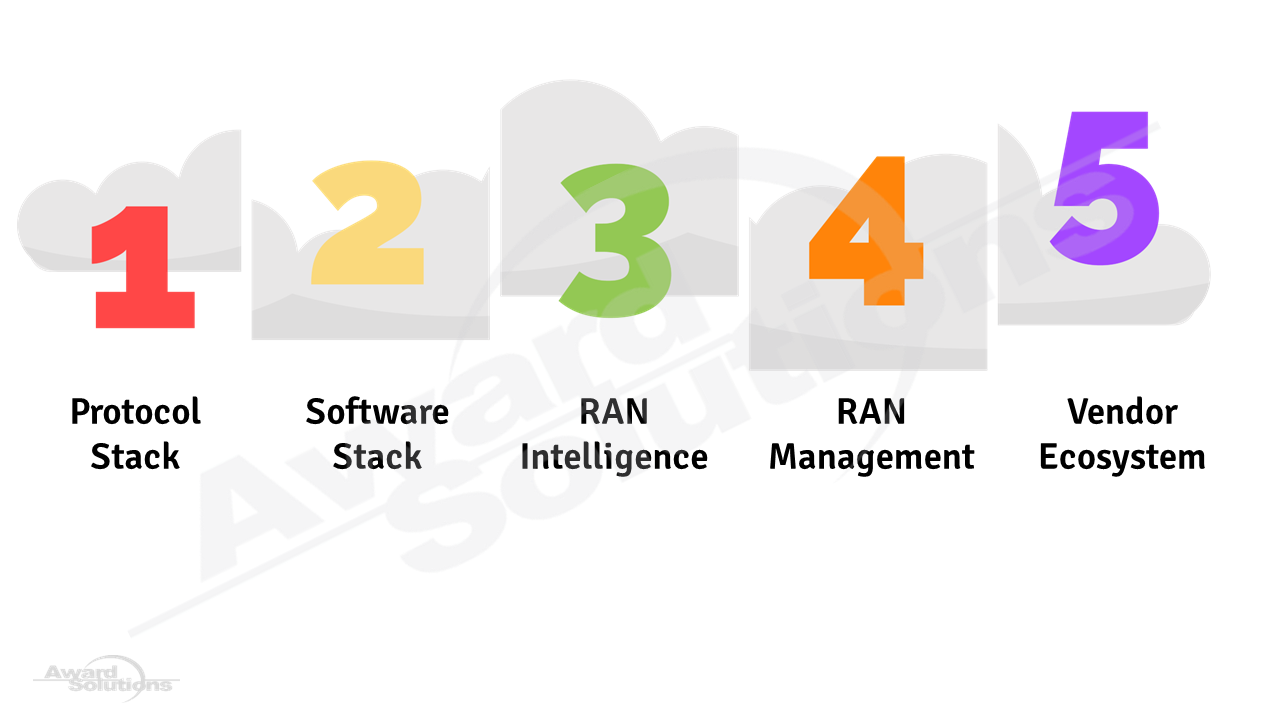
The Radio Access Network is the most happening place in a mobile network today, and with good reason. Analysts estimate that operators dedicate over half of their CapEx and OpEx to the RAN. As a result, boosting the capabilities of the RAN to drive down the total cost of ownership can have enormous implications for the overall economics of running a wireless network.
The 5G Radio Access Network needs to support many new capabilities. For example, 5G offers data rates almost 20 times those of 4G. In addition, 5G needs to support much lower latencies to accommodate entirely new classes of applications like Ultra-Reliable Low-Latency Communications (URLLC) and Massive Machine Type Communications (MMTC). Supporting these capabilities with an infrastructure and vendor ecosystem like 4G is impractical and prohibitively expensive.
The Open RAN architecture defined by the O-RAN Alliance shows how an Open RAN differs from a regular RAN.

In the Open RAN architecture, we see disaggregation along five dimensions:::
1. Protocol Stack Disaggregation or Split RAN
2. Software Stack Disaggregation or Virtual RAN
3. RAN Intelligence Disaggregation
4. Management Disaggregation
5. Vendor Ecosystem Disaggregation

Protocol Stack Disaggregation
Disaggregation of the protocol stack is also referred to as a split RAN deployment. The concept of split RAN was introduced by the standards body 3GPP. The processing of the mobile communications stack is split into multiple functional elements (the Central Unit or CU, the Distributed Unit or DU, and the Radio Unit or RU), thereby disaggregating the traditional monolithic wireless base station (the gNodeB). The O-RAN Alliance has adopted this architecture. Split RAN lets operators place network functions at optimal positions in the network, allowing the network to serve low-latency applications, reduce transport costs, and reduce CapEx through centralization and cloudification of certain elements. Split RAN also lets operators source these network functions from different vendors.
Software Stack Disaggregation
The RAN is moving to the cloud, called Virtualized RAN or Cloud RAN. Instead of the base station being a single monolithic box built with custom silicon, network functions are delivered as software that runs on a cloud consisting of Common-Off-The-Shelf (COTS) hardware residing in a private or a public data center. Architecture and standards for Network Functions Virtualization (NFV) are defined by the European Telecommunications Standards Institute (ETSI). The O-RAN Alliance has adopted and built on these standards for Open RAN. Cloudification lets operators design their data centers or choose the public cloud to deploy these network functions as software. It also allows operators to onboard their virtual network functions and manage their instantiation and lifecycle in a standardized and automated manner.
RAN Intelligence Disaggregation
The third dimension of disaggregation of the RAN is intelligence or control. In the past, most RAN features were embedded inside the RAN network function. There were some attempts to enable external control and management using a technology called Self-Organizing Networks (SON). However, most SON solutions were vendor specific. The O-RAN Alliance has split RAN intelligence into multiple layers and standardized the architecture and interfaces for these components so components from various vendors interwork easily. For example, the network functions gNB-CU and gNB-DU are controlled by two layers of RAN Intelligent Controllers (RICs), one handling near-real-time tasks and the other handling non-real-time tasks. Associated with each of these flavors of the RIC are applications (called xApps and rApps). The network functions defer to the RICs and the apps while responding to network events or making radio resource allocation decisions. This framework also offers mechanisms to incorporate artificial intelligence and machine learning for automation. This makes the RAN more responsive to business needs. It opens the ecosystem to encourage innovation and competition, driving up the range of use cases supported. Automation capabilities and increased competition drive down the total cost of ownership of the RAN.
RAN Management Disaggregation
The fourth dimension of disaggregation is that of the management layer. The O-RAN Alliance specifies a framework called the Service Management and Orchestration (SMO) framework that provides a standardized way to manage all applications. Instead of each vendor providing their way of managing applications and providing their management tools, the O-RAN Alliance specifies a standardized framework to manage all network nodes in the Radio Access Network.
Vendor Ecosystem Disaggregation
The fifth and last dimension of disaggregation is that of the vendor ecosystem. In previous generations, the entire base station was provided by a single vendor, and a given market usually used base stations from a single vendor. By disaggregating and standardizing the functionality and interface of these components, multiple vendors can provide best-in-class components for the RAN.
